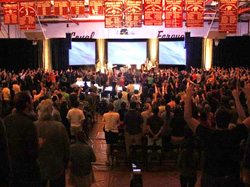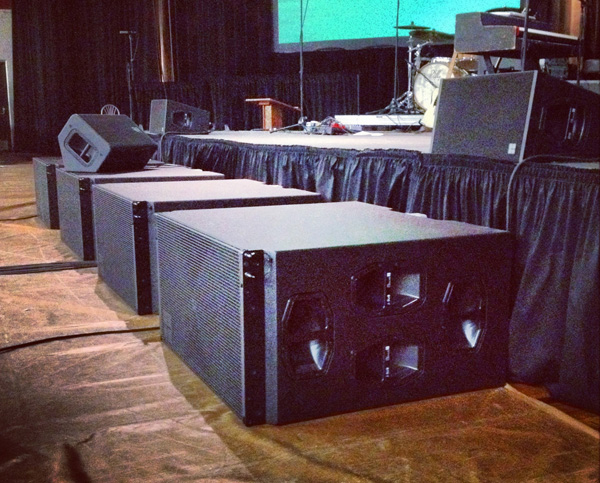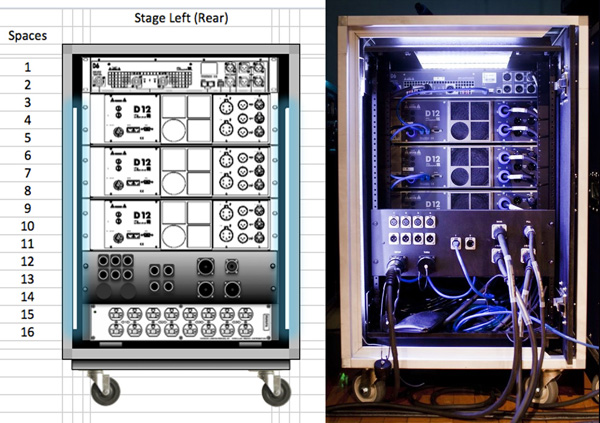
Added Advantages
The D12 amplifiers were divided into two 16-space racks, with four amps for each side of the PA.
In each rack, a pair of D12s powers the main hang of five Q1s and a single Q10 down fill, while another pair of D12s powers two of the J-Subs. A single D6 amplifier drives an additional pair of Q10 front fill loudspeakers on the stage.
To keep things simple for the volunteer setup crew, each rack contains mono-gender input/through multi-pin connectors, mated to the panel of the stage I/O rack for the console.
An added benefit to choosing the d&b components is that the new system instantly became very rider-friendly. In my mind, it would be a waste to keep a rig of this caliber locked up in a warehouse during the five days a week it isn’t in use.
By providing a system that not only meets the church’s needs but the rider requirements of touring acts as well, it could become a revenue-generating investment, and in fact has already gathered considerable interest among regional audio rental houses.
Further, due to the nature of the dipole configuration, the excessive wall reflections and long decay times were dramatically reduced. As a result, system tuning was unnecessary for the most part, compared to other rigs I’ve brought in where extensive EQ was required to clean up the room. At front of house, it feels like you’re mixing on studio monitors. Every detail, every nuance is there, without the “rock ‘n’ roll smear” or sounding like a large hall reverb is assigned to the left-right bus.
In the low-end, the J-Subs have far surpassed our expectations with not only their output, but also the tightness with which each transient is delivered. I’ve started using a good deal less low-end in my mixes any time I work with cardioid subs, simply because tightness and clarity reduce the need for higher SPL.
Further Aspects
Finally, it should be noted that the importance of the “little things” cannot be overemphasized. Simply put, don’t skimp on the small additions that will make both your life and your crew’s lives easier on a daily basis. High-quality multi-pin connectors such as those from LK, though more expensive, can last the lifetime of the system (because who has time to replace pins when you’ve got a gig to run?).
Another huge time-saver is racks with “slam-latch” doors. For this project, I used Olympic Cases Fast-Pack racks, and the convenience alone of not having to hunt down rack lids at the end of the night has been worth the cost. Lastly, LED strips can be easily mounted behind the rack frame to create an illuminated, shadow-free area to quickly patch, and it looks a lot cleaner than using rope lights.
With any project, it takes a team of dedicated, passionate individuals who are all striving for the same degree of excellence. Zach Richards of Big House Sound and Joe DiFalco of d&b were instrumental in providing not only the data, but also insightful recommendations with optimizing DSP capabilities and array placement. Big House was gracious enough to let us take over the back corner of their warehouse for three weeks, and even set aside a few of their techs for soldering duty.
Last but not least, my good friend and assistant James Muturi spent many a late night by my side unboxing gear, wiring racks, and stenciling cases. We can look back on all of the hard work knowing that we helped transform a high school gymnasium into one of the best-sounding rooms in Austin.
Todd Hartmann is the audio engineering coordinator for the Austin Stone Community Church as well as a freelance audio engineer.


